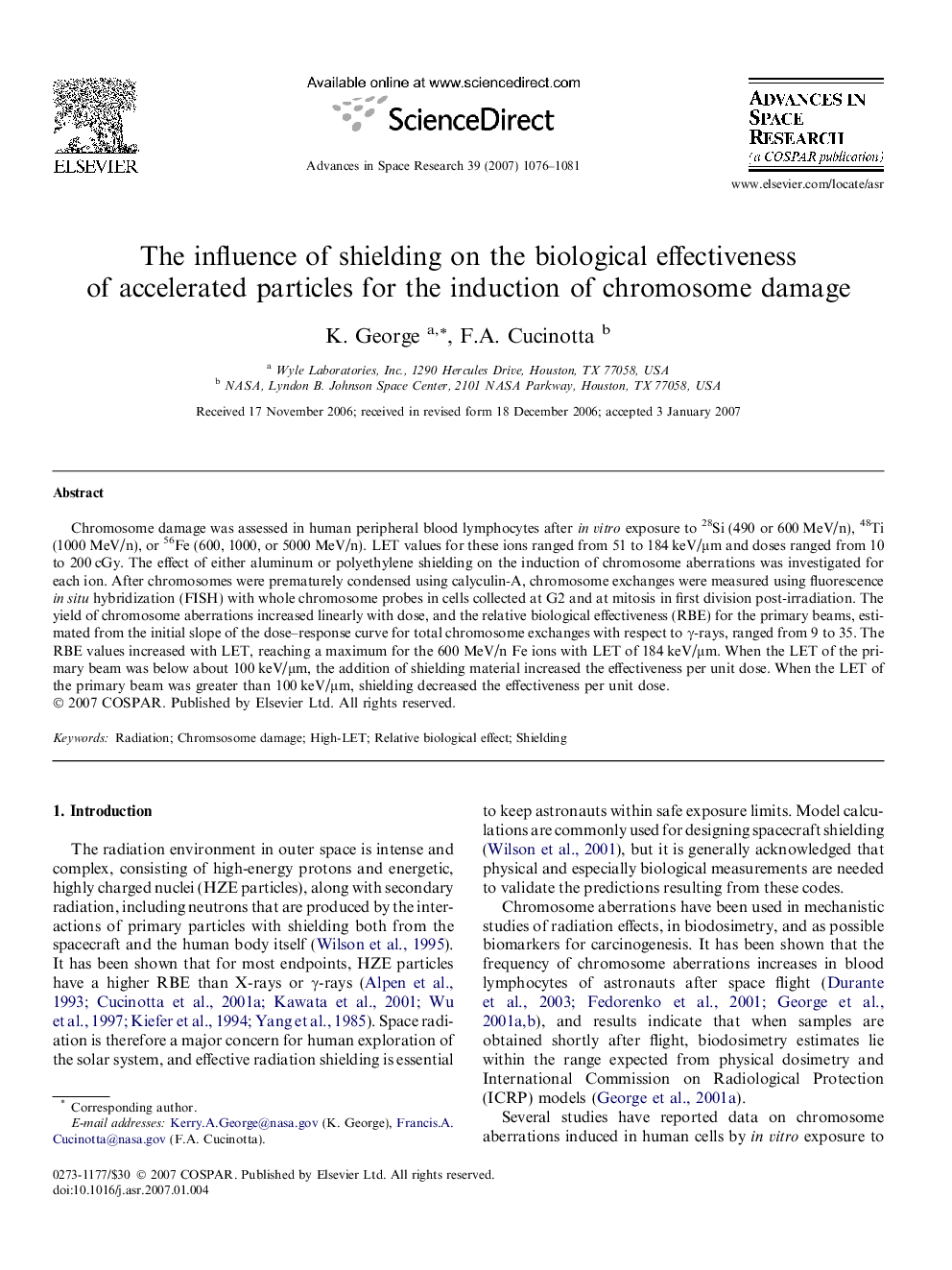| Article ID | Journal | Published Year | Pages | File Type |
|---|---|---|---|---|
| 1767602 | Advances in Space Research | 2007 | 6 Pages |
Abstract
Chromosome damage was assessed in human peripheral blood lymphocytes after in vitro exposure to 28Si (490 or 600 MeV/n), 48Ti (1000 MeV/n), or 56Fe (600, 1000, or 5000 MeV/n). LET values for these ions ranged from 51 to 184 keV/μm and doses ranged from 10 to 200 cGy. The effect of either aluminum or polyethylene shielding on the induction of chromosome aberrations was investigated for each ion. After chromosomes were prematurely condensed using calyculin-A, chromosome exchanges were measured using fluorescence in situ hybridization (FISH) with whole chromosome probes in cells collected at G2 and at mitosis in first division post-irradiation. The yield of chromosome aberrations increased linearly with dose, and the relative biological effectiveness (RBE) for the primary beams, estimated from the initial slope of the dose-response curve for total chromosome exchanges with respect to γ-rays, ranged from 9 to 35. The RBE values increased with LET, reaching a maximum for the 600 MeV/n Fe ions with LET of 184 keV/μm. When the LET of the primary beam was below about 100 keV/μm, the addition of shielding material increased the effectiveness per unit dose. When the LET of the primary beam was greater than 100 keV/μm, shielding decreased the effectiveness per unit dose.
Related Topics
Physical Sciences and Engineering
Earth and Planetary Sciences
Space and Planetary Science
Authors
K. George, F.A. Cucinotta,
